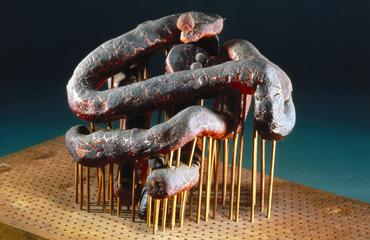
Clarke's Export Hydrometer (dated 1815) by DRING & FAGE
- maker:
- Dring and Fage




Clarke's Export Hydrometer (dated 1815) by DRING & FAGE, NO 20 TOOLEY STREET, NEAR LONDON BRIDGE, No 9665, with 39 weights and ivory thermometer in mahogany case.
In 1746 John Clarke described his hydrometer as ‘An instrument to ascertain the true strength of proof of brandy, rum, malt or melasses spirits, without tasting the same’. It measures the specific gravity of liquids by the flotation principle. The proof of the alcohol can be determined by the weight added to the bulb. Clarke hydrometers were adopted by the Excise in 1762 in order that strength as well as volume could be ascertained. By the end of the century the Clarke type was not considered sufficiently accurate; for example, the thermometer scales read from ‘coldish’ to ‘very hot’, so they were replaced soon after this example was made by the superior, more numerically based, Sike’s hydrometer.
Details
- Category:
- Experimental Chemistry
- Object Number:
- 1993-1284
- Measurements:
-
overall: 167 mm
- type:
- hydrometer
- credit:
- National Maritime Museum




